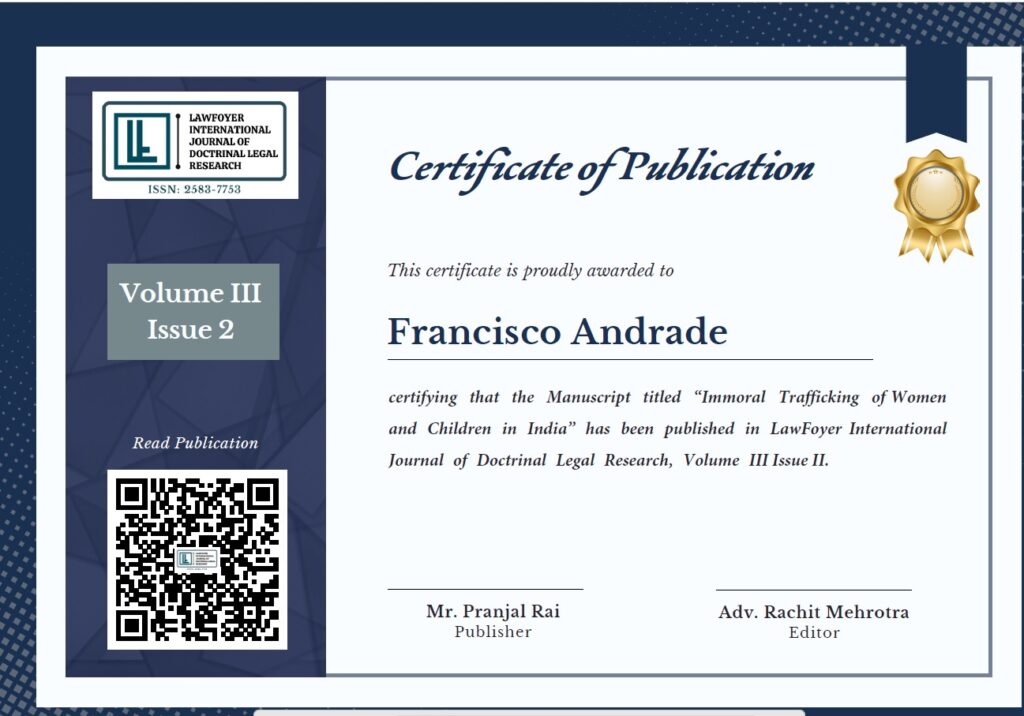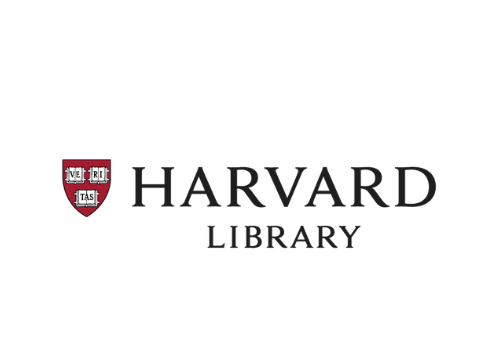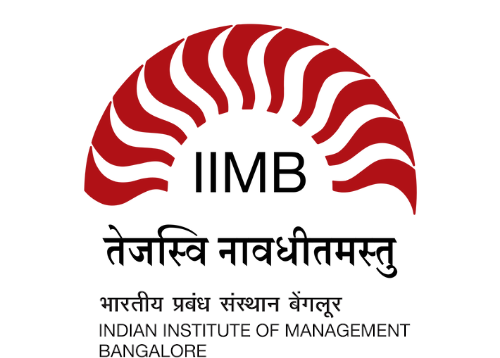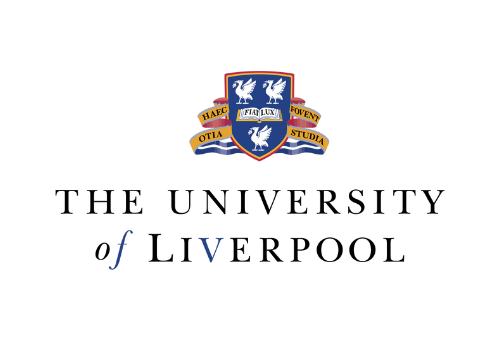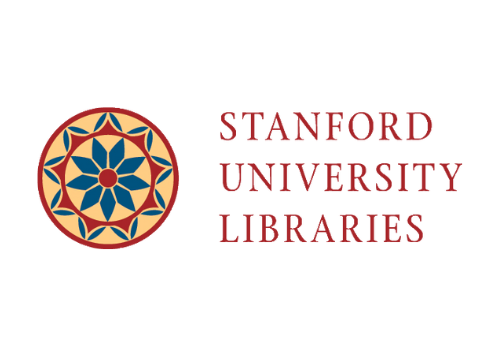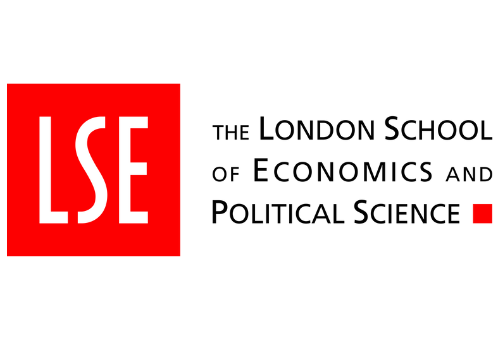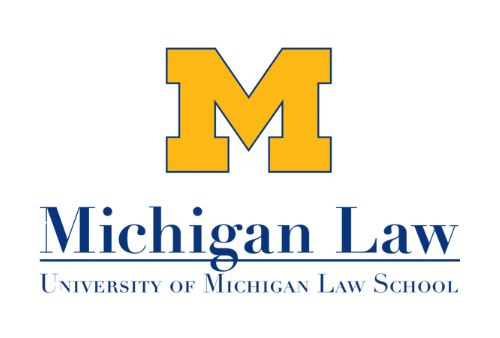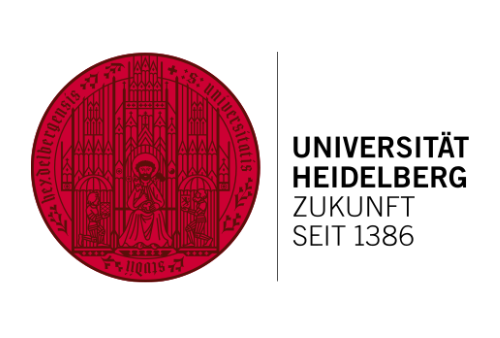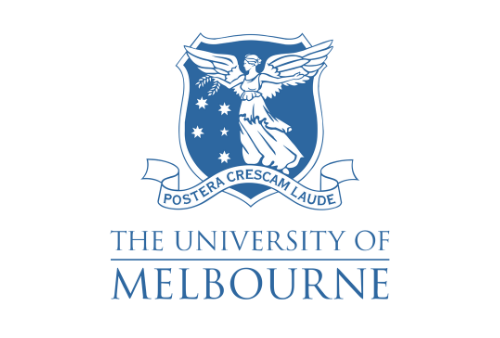Call For Paper
(Volume 3 Issue 4)
Welcome to LIJDLR – India’s Most Extensively Indexed Law Journal, Where Scholarship Meets Global Recognition
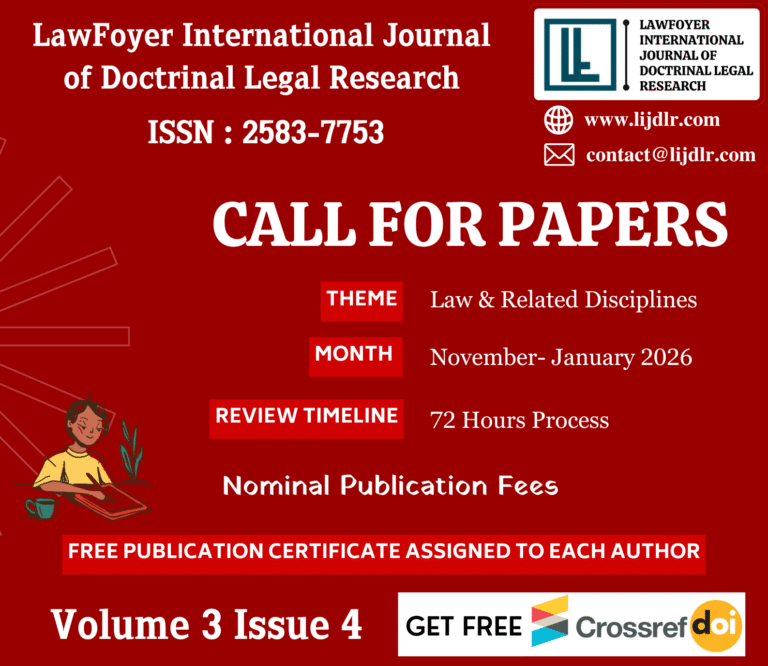
LIJDLR, ISSN Number:- 2583-7753, Impact Factor:- 6.07 is an Open Access, online Quarterly Peer Reviewed International Journal. LawFoyer International Journal of Doctrinal Legal Research Journal invites Research papers, Articles, Book Reviews & Case Commentaries. You can submit your manuscript via Online Submission System. The academic publishing industry is evolving rapidly, and this is no secret. There has been an increase in the number of new editors, reviewers, and publishers, which has resulted in a shift in the standards expected from researchers in all fields.
The Journal is now indexed on 350+ International Libraries and Databases including, inter alia, Harvard University Library (HOLLIS), Hein Online, Imperial College London Library, London School of Economics Library, Oxford University Library (SOLO), Liverpool University Library, Sidney University Library, World Cat Library, IIM Bangalore Library, University of British Columbia Library, Cooper Union Library, East Tennessee State University Library, Sheffield Hallam University, Rutgers University Libraries, ISSN, CrossRef, EuroPub, Google Scholar, Research Gate, ORCHID, COS, Scilit and many more national and international databases, providing extensive International Recognition to our published authors.
Theme of the Journal:
For Research Papers:
- The Manuscripts submitted must be related to any subject matter related to Legal or Socio-Legal issues.
- Manuscripts on interdisciplinary subject matters are also invited so far as they intersect with Law or Legal Issues of the concerned subject matter.
For Case Analyses:
- Any Landmark Case of Apex Courts of any Country (including Supreme Court of India) which has not been overruled and has made significant impact on the Legal Jurisprudence of that specific Country or International Legal Jurisprudence Worldwide.
- Any landmark case / decision of International Courts (ICC / ICJ) or other Quasi Judicial Bodies which has made significant impact on the International Legal Jurisprudence Worldwide.
Important Dates
Submission & Publication Details | Timelines |
|---|---|
Schedule for Volume 3 Issue 4 | Nov - Jan 2026 |
Deadline of Submission | 30th January 2026 (For this issue). |
Review Results | 72-hour Review Process (Initial Plagiarism check) |
Publication of Manuscript | Publication live from November to January 2026 (Publication typically occurs within 3 to 6 days after completing pre-publication formalities. Urgent requests are also accommodated.) |
Issuance of Certificate | Immediately at Publication. |
Processing Charges:
For Indian Authors:
- Single Author:- Rs 600/-
- Two Authors:- Rs 900/-
- Three Authors: Rs. 1200/-
For Author(s) outside India: $ 20/-
Submission Guidelines
GENERAL INSTRUCTIONS
- Word Limit for Research Papers: (3500 – 10000 words).
- Word Limit for Case Analysis: (2000 – 5000 words).
- All Manuscripts must be accompanied by an abstract of a maximum of 250 to 300 words.
- Up to Two Co-authors i.e., (Total 3 Authors) are allowed for Research Paper submissions.
- Up to One Co-author is allowed for all categories of submissions other than Research Paper submissions.
- Plagiarism up to 15% as per Turnitin Plagiarism Software is allowed.
- All submissions shall be the author’s original work, not previously published anywhere, and not under consideration by any other journal at the time of submission. Manuscripts that are plagiarized, in part or whole, will be immediately disqualified from the competition by LIJDLR.
- The Authors shall be completely liable for any dispute that arises after publication of manuscript, including copyright, defamation, offensive content, or contempt, and they undertake to bear the loss (if any) that is caused by breaching copyright or any other rights or liabilities.
- Even though it is recommended that the author sticks to the prescribed word limits, the editorial board of Journal may be willing to be flexible on the word limit based on the quality of the Manuscript as long as it meets other publication criteria.
FORMAT OF MANUSCRIPT
- On the first page of the manuscript, the author should include the title of the paper, the names of the authors, and their affiliation with the respective institutions, along with email ids, followed by an abstract and keywords. The abstract needs to be clear and concise, while still conveying all the necessary information.
- Footnotes should be written in Times New Roman style, font size 10, with 1.0 line spacing and the main body of the book should be written in Times New Roman style, font size 12, with 1.5 line spacing. Each heading is required to have a structure that is consistent throughout.
- There must be a standard citation style used throughout both the text and the footnotes. The authors must prefer to use either Bluebook 20th Edition, OSCOLA 4th Edition, or ILI Citation Style. [Note: No in-text citation styles like APA, Chicago shall be used, only Footnote based Citation styles shall be used.]
- Microsoft Office word is the recommended file format for any articles (2003 or above). It is necessary to insert illustrations at the right points throughout the paper. It’s important to take care of the numbering. No borders or other decorative implementations shall be entertained anywhere in the entire text.
- Research Paper Format: The following sections must be included in the manuscript:
- Title page (including Author Details as sought to be described above)
- Abstract (250 – 300 words)
- Keywords (maximum 5)
- Introduction and Research Problem
- Research Objectives
- Research Questions
- Research Hypotheses
- Research Methodology
- Literature Review
- Research & Analysis (divided into relevant Sub-Headings)
- Suggestions and Recommendations (suggest possible solutions to the legal problem researched)
- Conclusion
- References
- Case Analysis Format: The following sections must be included in the manuscript:
- Title page (including Author Details as sought to be described above)
- Abstract (250 – 300 words)
- Keywords (maximum 5)
- Introduction (Briefly describe the Core Concepts / Problem discussed in the Case)
- Factual & Procedural Background of the Case
- Legal Issues involved in the Case
- Arguments Advanced by the Parties
- Research and Analysis (Explain Issue-wise Research and Analysis Done by the Court)
- Judgment (explaining Ratio Decidendi and Obiter Dicta given by the court separately)
- Conclusion and Comments (Comment about how the case is landmark and how did it impact the legal jurisprudence of the subject matter to which the case relates)
- References
Certificate
